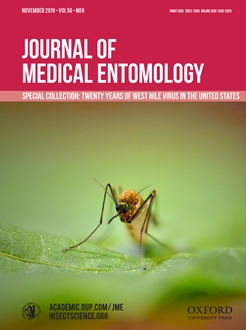Chrysomya megacephala Fabricius is one of the most common myiasis-causing and carrion-feeding fly species in the tropics. This species has a worldwide distribution due to globalization and therefore is of critical importance to the public health sector and forensic investigations. Development studies carried worldwide show that Ch. megacephala reared at similar temperatures may require different amounts of time to complete their cycle of growth. The present study determined for the first time the life-history information of this species in Sri Lanka. Chrysomya megacephala colonies were reared on three different food sources (bovine muscle, swine muscle, and swine liver) considering the most common forensic entomology rearing mediums and the capability of Ch. megacephala to cause myiasis in cattle. Furthermore, colonies were reared at four temperature regimes representing several specific development conditions of this blowfly: 1) 20°C representing the estimation of the lower developmental threshold for this species in Sri Lanka; 2) 25 and 27°C representing typical room/environmental temperatures in Sri Lanka; and 3) 38°C as this is the typical living animal temperature, representing myiasis conditions. Results show that temperature significantly affected larval length and width over time; however, tissue type was not a significant factor. The fastest development was recorded at 38°C for immature feeding on bovine muscle (162.15 h), followed by those fed swine liver (184.15 h) and swine muscle (208.00 h). The calculated minimum temperature threshold for Ch. megacephala was 13°C. Data generated will be crucial for future forensic investigations involving living or deceased individuals colonized by this species.
How to translate text using browser tools
20 June 2019
Effect of Temperature and Tissue Type on the Development of the Forensic Fly Chrysomya megacephala (Diptera: Calliphoridae)
Y. Tharindu B. Bambaradeniya,
W. A. Inoka P. Karunaratne,
Jeffery K. Tomberlin,
Induwara Goonerathne,
Rasika B. Kotakadeniya,
Paola A. Magni
ACCESS THE FULL ARTICLE
It is not available for individual sale.
This article is only available to subscribers.
It is not available for individual sale.
It is not available for individual sale.

Journal of Medical Entomology
Vol. 56 • No. 6
September 2019
Vol. 56 • No. 6
September 2019
Chrysomya megacephala
forensic investigation
larval development
myiasis




